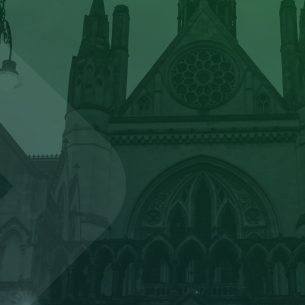Partner Bambos Tsiattalou examines the dangers to consumers and sellers of ‘grey-market’ goods infiltrating the consumer goods market in an age of globalised industry.
Bambos’ article was published in Securing Industry, 7 June 2019, and Intellectual Property Magazine, 1 July 2019. The articles can be found here and here respectively.
The ‘grey market’ refers to the trading of goods through channels which are legal but unintended by the trade mark proprietor. Grey market goods are therefore products that third parties are authorised to manufacture but not sell i.e. they are authentic products sold by unlicensed re-sellers.
The grey market can represent a significant problem for brand owners, as consumers are able to benefit from substantial discounts on genuine products bought from unauthorised sellers. The problems are not limited to an undercut in prices, but also to the potential loss of trust in a brand when a product not covered by guarantee faces an issue with its performance. The term has historically been used by proprietors in an attempt to suggest that buying such goods is in some way illegal, in the hope that customers would be encouraged only to buy directly from them.
In an age of globalised industry, the ability to manufacture and transport goods at an increasingly efficient rate to multiple countries is no doubt desirable. Whilst there are obvious benefits for consumers in being able to purchase goods at reduced prices, there are also inherent risks whereby grey markets goods are mixed with counterfeit goods, meaning that buyers cannot always be confident as to what they are buying. There are also important safety issues to consider. Whilst we may share the same tastes in products from other countries, we may not share the same approach to safety regulations or labelling requirements. As such, there has been increasingly more scrutiny applied to the ‘Grey Market’ by law enforcement agencies.
There may of course be entirely legitimate reasons for the production of surplus goods, one such example being ‘test’ products. There are many circumstances in which grey market goods may come into existence and not all will begin with an ulterior motive to sell those products without the consent of the registered trade marker. Whilst there is nothing illegal about buying such goods, In R v M & Ors [2017] UKSC 58, the Supreme Court was asked to decide whether dealing in grey market goods could constitute a criminal offence.
In that instance, the court considered arguments on an interlocutory appeal that the offences contained under section 92(1) of the Trade Marks Act 1994 could be applied only to ‘true counterfeits’ and not grey goods. In short, it was alleged that the defendants were engaged in the bulk importation and subsequent sale of goods. Many of those goods were said to bear what appeared to be the trade marks of well-known brands. They were manufactured abroad, in countries outside the EU. It was accepted by the appellants that some of the goods were ‘true’ counterfeit goods. However, a significant portion of the remaining goods initially authorised by the registered trade mark holder, were in fact being sold outside of that original consent. The causes of the non-authorisation of sale might be, it was said, various but they could be described as goods appearing on the “grey market”.
The arguments on appeal related to the true construction of section 92(1) of the 1994 Act which states that:
“92.- (1) A person commits an offence who with a view to gain for himself or another, or with intent to cause loss to another, and without the consent of the proprietor –
(a) applies to goods or their packaging a sign identical to, or likely to be mistaken for, a registered trade mark, or
(b) sells or lets for hire, offers or exposes for sale or hire or distributes goods which bear, or the packaging of which bears, such a sign, or
(c) has in his possession, custody or control in the course of a business any such goods with a view to the doing of anything, by himself or another, which would be an offence under paragraph (b).”
It was argued by the appellants that the goods which were originally manufactured with the permission of the trade mark proprietor but not authorised for onwards sale, were not caught by the statute. The contention being that s.91 (1)(b) had to be read in conjunction with the proceeding section (1)(a), meaning that the statute was only applicable to goods where the relevant sign had been applied, without the consent of the proprietor. As stated above, grey market goods concern products that have the sign originally applied with such consent in place. It is only the sale of those goods that is not authorised by the proprietor. It was argued that grey market goods did not fall within section (1)(a) and that they were not therefore goods that bear “such a sign” for the purposes of (1)(b).
The court held that such a reading of section 91 would be constrained and unnatural, finding that grey market goods such as those produced as surplus products that were then sold without the proprietors consent would be caught by the expression “identical to, or likely to be mistaken for, a registered trade mark.”
It necessarily followed that the distribution of grey market goods without the consent of the brand owner would constitute a criminal offence.
The court also concluded that the interpretation of section 91 did not represent a breach of rights under article 1, Protocol 1 to the European Convention on Human Rights as although the appellants have rights in their goods, they did not have a proprietary right in the trade marks. The 1994 Act did not prevent them from selling the goods that they had bought, but simply prohibited them from doing so with the misleading and infringing trade marks attached i.e. with the impression that they were doing so with the consent of the proprietor.
Brand owners have long been able to enforce their trade mark rights in civil courts with respect to counterfeit and grey market goods, but the Supreme Court decision provides them with another tool with which to protect their intellectual property. For the consumer however, it necessarily restricts the ability to buy original products at reduced prices. It also limits the availability of products for example in countries where distribution has been blocked by a brand owner. Although there are obvious benefits to the consumer in being able to purchase at a lower cost, this also creates confusion. The benefits of reduced prices are arguably outweighed by the implications on quality, safety and guarantees as set out above.
There is of course a need to protect the integrity of brands that necessarily have an effect on a country’s economy, not least as a result of the taxes that are paid in respect of the same. But perhaps a fairer way forward would also be for brand owners to make changes themselves to reduce the impact of the grey market on their products. Such changes could include greater controls over the supply of a product and a single cost for products in all countries of distribution, as well as the increasing of those distribution channels. Taking their lead from the Supreme Court, brand owners should now at the very least consider inserting express contractual provisions relating to such goods in their contracts with manufacturers. There is no doubt that the law should penalise those who seek to ‘cash in’ on the trademarks of others. However, steps should also be taken to avoid bringing costly legal proceedings against individuals seeking to take advantage of gaps in an increasingly globalised economy.





